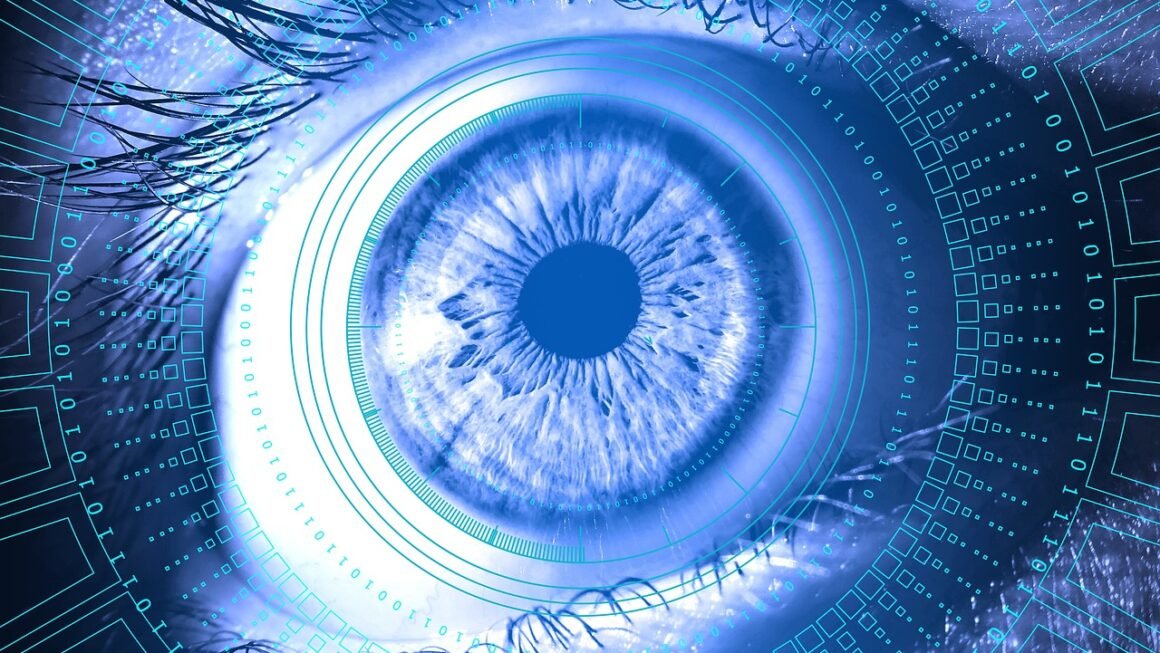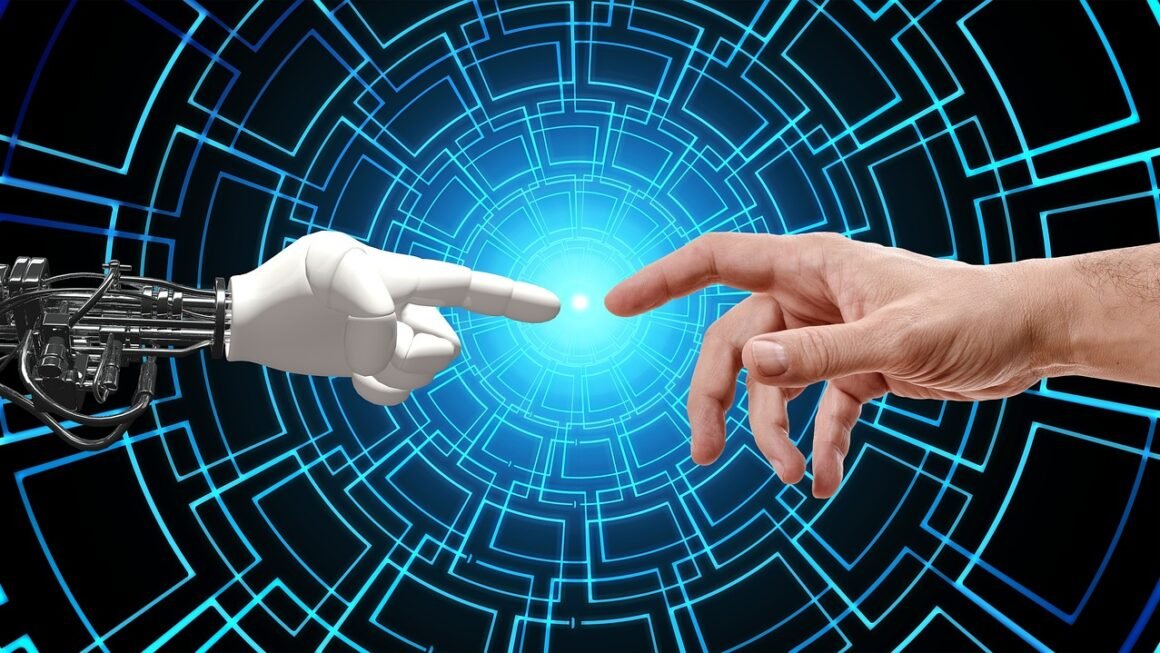Imagine training a dog to fetch, but instead of giving explicit instructions every time, you simply reward good behavior with a treat. That’s the essence of reinforcement learning (RL) – an approach where an agent learns to make decisions by interacting with an environment and receiving rewards or penalties for its actions. Unlike supervised learning, which relies on labeled data, RL focuses on learning through trial and error, making it powerful for tackling complex problems where explicit guidance is unavailable. This blog post dives deep into the fascinating world of reinforcement learning, exploring its core concepts, algorithms, applications, and future trends.
What is Reinforcement Learning?
The Core Idea
Reinforcement learning (RL) is a type of machine learning where an agent learns to behave in an environment by performing actions and receiving rewards or penalties. The agent’s goal is to maximize the cumulative reward it receives over time. This paradigm mimics how humans and animals learn through experience.
- Think of a robot learning to walk. It stumbles, falls, gets back up, and eventually learns the optimal sequence of movements to maintain balance and move forward.
Key Components
The core components of an RL system are:
- Agent: The learner, which makes decisions.
- Environment: The world the agent interacts with.
- State: A representation of the environment at a given time.
- Action: A choice the agent makes in a particular state.
- Reward: Feedback from the environment, indicating the desirability of an action in a given state.
- Policy: The strategy the agent uses to select actions based on the current state (maps states to actions).
- Value Function: An estimate of how good it is to be in a particular state (predicts future reward).
Supervised, Unsupervised, and Reinforcement Learning: A Comparison
Understanding the differences between RL and other machine learning paradigms is crucial:
- Supervised Learning: Learns from labeled data (input-output pairs). Examples include image classification and regression.
- Unsupervised Learning: Discovers patterns in unlabeled data. Examples include clustering and dimensionality reduction.
- Reinforcement Learning: Learns through interaction with an environment and receiving rewards. No explicit labeled data is provided.
How Reinforcement Learning Works
The RL Process
The RL process can be summarized in the following steps:
Exploration vs. Exploitation
A fundamental challenge in RL is the exploration-exploitation dilemma.
- Exploration: Trying out new actions to discover potentially better rewards.
- Exploitation: Choosing actions that are known to yield high rewards based on past experience.
Balancing these two is essential. Too much exploration can lead to inefficient learning, while too much exploitation can prevent the agent from discovering optimal strategies. Common strategies include epsilon-greedy (randomly exploring with a small probability) and upper confidence bound (UCB) methods.
Markov Decision Processes (MDPs)
RL problems are often formulated as Markov Decision Processes (MDPs). An MDP is a mathematical framework for modeling decision-making in situations where outcomes are partly random and partly under the control of a decision maker.
- An MDP is defined by:
A set of states S
A set of actions A
A transition probability function P(s’, r | s, a) (the probability of transitioning to state s’ and receiving reward r after taking action a in state s)
A reward function R(s, a) (the expected reward for taking action a in state s)
A discount factor γ (gamma), which determines the importance of future rewards (0 ≤ γ ≤ 1)
Key Reinforcement Learning Algorithms
Q-Learning
Q-learning is an off-policy RL algorithm that learns the optimal Q-function, which represents the expected cumulative reward for taking a specific action in a specific state and following the optimal policy thereafter.
- Update Rule: Q(s, a) ← Q(s, a) + α [R(s, a) + γ maxₐ’ Q(s’, a’) – Q(s, a)]
α (alpha) is the learning rate, which controls how much the Q-value is updated.
- Off-policy: The agent learns the optimal Q-function regardless of the policy being followed.
SARSA (State-Action-Reward-State-Action)
SARSA is an on-policy RL algorithm that learns the Q-function for the policy being followed.
- Update Rule: Q(s, a) ← Q(s, a) + α [R(s, a) + γ Q(s’, a’) – Q(s, a)]
Notice that a’ is the action actually taken in the next state s’* according to the current policy.
- On-policy: The agent learns the Q-function based on the actions it actually takes.
Deep Q-Networks (DQNs)
DQNs combine Q-learning with deep neural networks to handle high-dimensional state spaces, such as images.
- Function Approximation: A neural network approximates the Q-function, taking the state as input and outputting Q-values for each action.
- Experience Replay: Stores past experiences (state, action, reward, next state) in a replay buffer and samples them randomly during training to break correlations and stabilize learning.
- Target Network: Uses a separate, slowly updated target network to calculate the target Q-values, which helps to stabilize training.
Policy Gradient Methods
Policy gradient methods directly optimize the policy without explicitly learning a value function.
- REINFORCE: A Monte Carlo policy gradient algorithm that updates the policy based on the return (cumulative reward) received after an episode.
- Actor-Critic Methods: Combine policy gradient methods with value function approximation. The “actor” learns the policy, while the “critic” evaluates the policy. Examples include A2C and A3C.
Applications of Reinforcement Learning
Robotics
RL is widely used in robotics for tasks such as:
- Robot Locomotion: Training robots to walk, run, and navigate complex terrains. For example, Boston Dynamics uses RL extensively in its robotics development.
- Manipulation: Teaching robots to grasp and manipulate objects. Researchers are using RL to enable robots to perform complex assembly tasks.
- Autonomous Navigation: Developing self-driving cars and autonomous drones.
Game Playing
RL has achieved remarkable success in game playing:
- Atari Games: DQNs achieved human-level performance on a variety of Atari games.
- Go: AlphaGo, developed by DeepMind, defeated the world champion in Go using a combination of RL and tree search.
- StarCraft II: AlphaStar, also by DeepMind, achieved grandmaster level in StarCraft II.
Healthcare
RL is being explored for applications in healthcare, including:
- Personalized Treatment: Developing treatment plans tailored to individual patients. For example, RL can be used to optimize drug dosages or radiation therapy schedules.
- Drug Discovery: Identifying promising drug candidates by simulating their interactions with biological systems.
Finance
RL can be applied to various financial problems, such as:
- Algorithmic Trading: Developing trading strategies that maximize profits while minimizing risk.
- Portfolio Management: Optimizing the allocation of assets in a portfolio.
Resource Management
RL can be used to optimize the allocation of resources in various domains:
- Energy Management: Optimizing the energy consumption of buildings or power grids.
- Traffic Control: Optimizing traffic flow in cities by adjusting traffic light timings.
Conclusion
Reinforcement learning is a powerful and versatile approach to machine learning that enables agents to learn optimal behavior through interaction with an environment. From robotics and game playing to healthcare and finance, RL is finding applications in a wide range of domains. While challenges remain, such as sample efficiency and the design of appropriate reward functions, ongoing research and development are pushing the boundaries of what is possible with RL. As computing power increases and more sophisticated algorithms are developed, we can expect to see even more impressive applications of RL in the years to come. By understanding the core concepts and algorithms of RL, you can unlock its potential to solve complex problems and create intelligent systems that can learn and adapt in dynamic environments.



